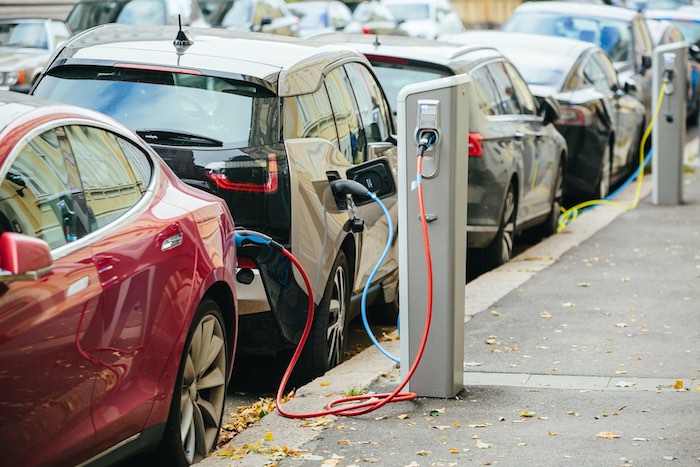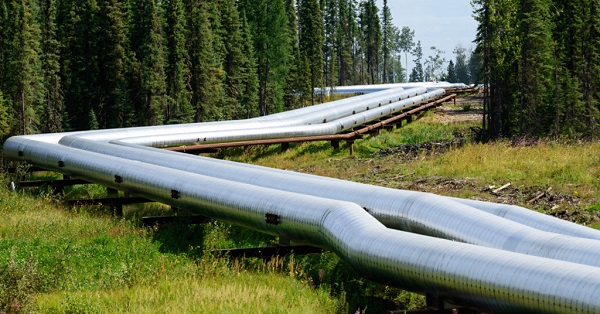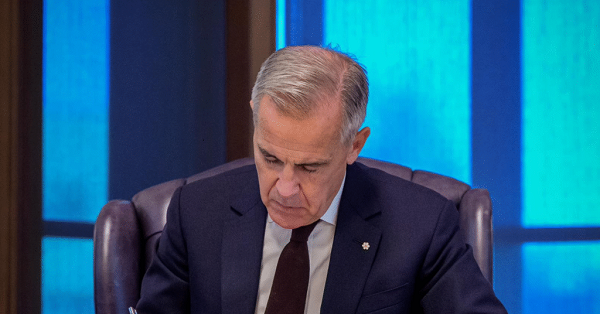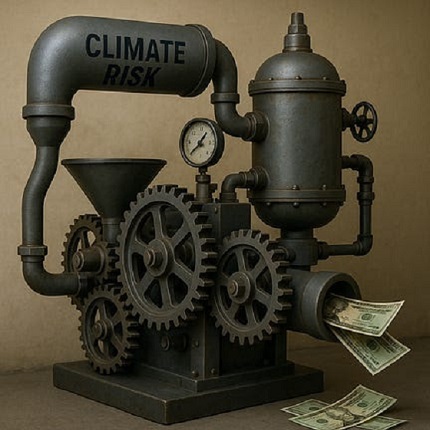Dan McTeague
The problem with Electric Vehicles

From Canadians for Affordable Energy
 Written By Dan McTeague
Written By Dan McTeague
For years now we’ve been hearing about the wonders of electric vehicles (EVs). Enormous amounts of money have been spent by governments to entice people to buy them, from subsidies to free charging stations.
Here in Canada, the Trudeau Liberals have already subsidised EVs at a cost of $1 billion. Another $680 million in the next five years will go toward the Zero Emission Vehicle Infrastructure Program (ZEVIP) to build an entire new infrastructure of charging stations.
In Ontario, Doug Ford’s government are ready “to become a North American hub for the next generation of electric vehicles,” and Ford’s PCs have recently committed to matching a $295 million investment from the Trudeau’s Liberals to retool the Ford Oakville Assembly Complex to become a global hub for battery electric vehicle production.
Electric vehicles are held up as the great green alternative to gas-powered vehicles. In fact, the federal government has set a mandatory target for all new light-duty cars and passenger trucks to be zero-emission by 2035 [read: electric and not gas-powered]. This is even more ambitious than their previous goal of 100% sales by 2040.
And, it seems, virtually the entire Canadian political class has either embraced or surrendered to the seemingly unstoppable momentum of EVs.
Well, here’s an interesting twist. Just the other week it was revealed that the Swiss government is considering legislation that would make it illegal for people to drive EVs over the winter except when it’s “absolutely necessary”.
Yes, you read that correctly. The Swiss government is discouraging people – to the point of making it illegal! – from driving their electric cars.
Why? Simple: there is not enough energy supply in Switzerland to power them.
Confused? How can this be?
Let me explain.
During the summer months, Switzerland gets around 60 percent of its energy from hydropower. But in the winter, hydro can’t produce enough energy, so the country imports a lot of electricity from France and Germany – both of which have long been dependent on Russian oil and gas imports.
Now that those “fossil fuels” have largely been cut off, these various European countries – not just Switzerland – are facing severe energy shortages this winter. This means that there won’t be enough electricity for people to charge their EVs. This move highlights the obvious flaw in this push towards electrification, especially EVs. While EVs don’t burn fuel, you need to charge the battery which, of course, requires energy.
Still confused? Right – perhaps you have never stopped to consider where the “energy” comes from that powers the EV charging stations?
Or did you just think that it was “magic” that powered the EVs?
Almost everywhere in the world, the charging stations are getting a lot of their power from oil and gas – the very same “fossil fuel” energy that EVs were supposed to replace. In many places, the power is coming from coal.
So to be clear, most countries typically need coal or oil or gas as a source of energy to power the charging stations, the very charging stations upon which many EV owners “power” their smug virtue signalling.
Some EV owners think, and even say out loud, that they are more concerned about the environment than you are. How can they say this? Well, this is because they have an electric vehicle, while you drive a gas-guzzling vehicle that is destroying the planet.
All the while, their very same electric vehicle most likely gets its energy, ultimately, from the same sort of greenhouse gas emitting fossil fuel that you do.
Ahem. (There are many other issues with EVs including the very expensive batteries with materials mined out of the earth, which is hardly a “zero emission” activity, or the reliability of the vehicles in our northern climate. More on that in another post.)
Consider too that here in Canada, the Trudeau government is pushing hard for us to move away from fossil fuels which provide reliable base power to our grid, towards renewable energy sources such as wind and solar, which are unreliable and intermittent.
Now imagine how this could play out over the next decades. If governments follow through on their plans to ban traditional gas-powered vehicles, it is their stated hope that everyone will have to drive an EV.
But, at the same time, governments want to shut down the traditional energy sector which – for the foreseeable future –provides most of the energy supply that powers EVs. If we’re forced to get all our power from wind and solar, that just means most people will never be able to drive anywhere.
We should consider what is happening in Switzerland as a warning shot. Our energy grids simply cannot provide enough power for electric vehicles, and this move towards EVs for everyone will fail. The Trudeau government is promoting a short-sighted, virtue-signalling policy that will cause significant societal harm along the way.
Maybe the disastrous situation in Europe this winter will lead to some long-overdue second thoughts about EVs, and the whole climate change agenda.
Dan McTeague
Will this deal actually build a pipeline in Canada?

By Dan McTeague
Will Carney’s new pipeline deal actually help get a pipeline built in Canada? As we said before, the devil is in the details.
While the establishment and mainstream media cheer on the new pipeline agreement, there are specific details you need to be aware of.
Dan McTeague explains in his latest video.
Business
Liberal’s green spending putting Canada on a road to ruin

Once upon a time, Canadians were known for our prudence and good sense to such an extent that even our Liberal Party wore the mantle of fiscal responsibility.
Whatever else you might want to say about the party in the era of Jean Chrétien and Paul Martin, it recognized the country’s dire financial situation — back when The Wall Street Journal was referring to Canada as “an honorary member of the Third World” — as a national crisis.
And we (remember, I proudly served as Member of Parliament in that party for 18 years) made many hard decisions with an eye towards cutting spending, paying down the debt, and getting the country back on its feet.
Thankfully we succeeded.
Unfortunately, since then the party has been hijacked by a group of reckless leftwing fanatics — Justin Trudeau and his lackeys — who have spent the past several years feeding what we built into the woodchipper.
Mark Carney’s finally released budget is the perfect illustration of that.
The budget is a 400 page monument to deficit delusion that raises spending to $644.4 billion over five years — including $141.4 billion in new spending — while revenues limp to $583.3 billion, yielding a record (non-pandemic) $78.3 billion shortfall, an increase of 116% from last year.
This isn’t policy; it’s plunder. Interest payments alone devour $55.6 billion this year, projected to hit $76.1 billion by 2029-30 — more than the entire defence budget and rising faster than healthcare transfers.
We can’t discount the possibility that this will lead to a downgrade of our credit rating, which will significantly increase the cost of borrowing and of doing business more generally.
Numbers this big start to feel very abstract. But think of it this way: that is your money they’re spending. Ottawa’s wealth is made up entirely of our tax dollars. We’ve entrusted that money to them with the understanding that they will use it responsibly. In the decade these Liberals have been in power, they have betrayed that trust.
They’ve pursued policies which have made life in Canada increasingly unaffordable. For example, at the time of writing it takes 141 Canadian pennies (up from 139 a few days ago) to buy one U.S. dollar, in which all of our commodities are priced. Well, that’s .25 cents per litre of gasoline. Imagine what that’s going to do to the price of heating, of groceries, of the various other commodities which we consume.
And this budget demonstrates that the Carney era will be more of the same.
Of course, the Elbows Up crowd are saying the opposite — that this shows how fiscally responsible Mark Carney is, unlike his predecessor. (Never mind that they also publicly supported everything that Trudeau did when he was in government.) They claim that Carney shows that he’s more open to oil and gas than Trudeau was.
Don’t believe it.
The oil and gas sector does get a half-hearted nod in the budget with, for instance, a conditional pathway to repeal the emissions cap. But those conditions are important. Repeal is tied to the effectiveness of Carney’s beloved industrial carbon tax. If that newly super-charged carbon tax, which continues to make our lives more expensive, leads to government-set emissions reductions benchmarks being met, then Ottawa might — might — scrap the emissions.
Meanwhile, the budget doubles down on the Trudeau government’s methane emissions regulations. It merely loosens the provisions of the outrageous Bill C-59, an act which should have been scrapped in its entirety. And it leaves in place the Trudeaupian “green” super structure, which has resource sector investment, and any business that can manage it, fleeing to the U.S.
In these perilous times, with Canada teetering on the brink of recession, a responsible government would be cutting spending and getting out of the way of our most productive sectors, especially oil and gas — the backbone of our economy.
It would be repealing the BC tanker ban and Bill C-69, the “no more pipelines act,” so that our natural resources could better generate revenue on the international market and bring down energy rates at home.
It would quit wasting millions on Electric Vehicle charging stations; mandating that all Canadians buy EVs, even with their elevated cost; and pressuring automakers to manufacture Electric Vehicles, regardless of demand, and even as they keep closing up shop and heading south.
But in this budget the Liberals are going the opposite direction. Spend more. Tax more. Leave the basic Net-Zero framework in place. Rearrange the deck chairs on the Titanic.
They’re gambling tomorrow’s prosperity on yesterday’s green dogma, And every grocery run, every gas fill-up, every mortgage payment will serve as a daily reminder that we are the ones footing the bill.
Once upon a time, the Liberals knew better. We made the hard decisions and got the country back on its feet. Nowadays, not so much.
-

 Focal Points2 days ago
Focal Points2 days agoCommon Vaccines Linked to 38-50% Increased Risk of Dementia and Alzheimer’s
-

 Automotive1 day ago
Automotive1 day agoThe $50 Billion Question: EVs Never Delivered What Ottawa Promised
-

 Alberta17 hours ago
Alberta17 hours agoAlberta introducing three “all-season resort areas” to provide more summer activities in Alberta’s mountain parks
-

 Health2 days ago
Health2 days agoThe Data That Doesn’t Exist
-

 Business1 day ago
Business1 day agoStorm clouds of uncertainty as BC courts deal another blow to industry and investment
-

 Business2 days ago
Business2 days agoThe Climate-Risk Industrial Complex and the Manufactured Insurance Crisis
-

 Agriculture16 hours ago
Agriculture16 hours agoGrowing Alberta’s fresh food future
-

 International15 hours ago
International15 hours agoTrump admin wants to help Canadian woman rethink euthanasia, Glenn Beck says







